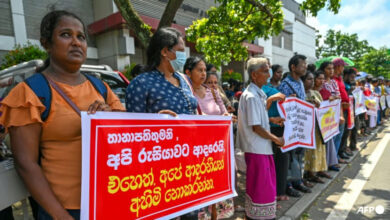Oli okayed Lower Arun for Indian firm, now blames Dahal
Initial deal to award the new project on Arun River to SJVN was signed in 2021 during Oli’s stint as prime minister.

By Anil Giri
Nepali politicians are in the habit of lying to cover their tracks or to spoil the reputation of their counterparts from other parties. They get away with it most of the time but sometimes these lies are so egregious they badly backfire.
Take the latest jibes of CPN-UML chair and former prime minister KP Sharma Oli aimed at Prime Minister Pushpa Kamal Dahal.
On Saturday, Oli criticised Dahal for giving two hydropower projects—the 669MW Lower Arun and the 480MW Phukot Karnali—to India for ‘peanuts’ during his recent India trip.
According to the press statement issued after Dahal’s visit, a project development agreement was signed for development of Lower Arun while a Memorandum of Understanding was signed for Phukot Karnali Project.
Besides this, during Dahal’s visit that concluded on June 3, India agreed to purchase 10,000MW from Nepal in the next ten years as the two countries inked a 25-year-long power trade deal.

“He gifted the two rivers [Phukot Karnali and Arun] for peanuts,” said Oli on Saturday while criticising the prime minister at a function organised by his party’s wing of civil servants in Kathmandu. “When I was the prime minister in 2019, we decided to develop the Phukot Karnali project on our own by mobilising internal resources.”
He argued that Phukot Karnali will be relatively cheaper to develop. “We had decided to develop this project using our own resources. Now we are handing it over to India. Can the prime minister say under what conditions the Phukot Karnali was given to the Indian company?”
Currently, the Indian state-owned Vidyut Utpadan Company Limited (VUCL) is the survey licence holder of Phukot Karnali. During Dahal’s India’s visit, the VUCL and India’s NHPC Limited signed the MoU to jointly develop the project. Earlier, the government had considered developing the same project under China’s Belt and Road Initiative (BRI).
The government has already handed over the 750MW West Seti and 450MW Seti River-6 to the NHPC.
In the Arun river basin, India’s Satluj Jal Vidyut Nigam (SJVN) is currently developing the Arun III project with 900MW generation capacity and is set to complete it by the end of 2024. The same company will develop Lower Arun.

The project will not have any dam or reservoir and will be a ‘tailrace’ development of Arun-3 hydro project, which will mean water will re-enter the river enabling the development of the Lower Arun project.
“The water that gets discharged from Arun III is ours,” said Oli at the function on Saturday. “So we have the right to use the water discharged from the Arun III to develop Lower Arun.”
Oli went on, “Even after [the Indian developer] building a high-dam, we will get 21 percent free energy from Arun III. The water discharged from Arun III is ours and we cannot give it away for free… This should not have been done.”
But while Oli blames Dahal for handing over Lower Arun to the SJVN, it was Oli as prime minister who took the initiative to award the project to the Indian state-owned company.
When Oli was prime minister, a memorandum of understanding was signed between Investment Board Nepal’s Chief Executive Officer Sushil Bhatta and Satluj Jal Vidyut Nigam Chairman and Managing Director Nand Lal Sharma in Kathmandu on June 11, 2021. Earlier, a board meeting of the Investment Board Nepal (IBN), which is chaired by the prime minister, had given the green light for the MoU’s signing.
“The developer should complete the detailed feasibility study of the project and submit the detailed project report for approval at the board within two years from the agreement date,” the IBN had said in a statement.
The prime minister is ex-officio chair of the IBN. The project will be built under the ‘build, own, operate and transfer’ (BOOT) model. On the occasion, the then finance minister Bishnu Prasad Paudel, who was vice-chair (ex-officio) of the board, committed to extend necessary support to expedite project development.
Paudel, who was present during the signing of the agreement between the IBN and India’s SJVN, told the Post that the 2021 agreement was limited to carrying out further study.
“In my understanding and as far as my memory serves me right, the agreement was to study what Nepal would get, what the developer would gain and accordingly prepare the project development agreement [for Lower Arun],” he said.
The PDA for the project was signed during Dahal’s recent India visit.
A PDA determines the roles and responsibilities of the two governments as well as the project’s developers.
After the MoU is signed, a survey licence is provided to the developer company. The licence holders can then apply for a construction licence during the survey licence period, according to Nepal’s laws.
An official at the Energy Ministry said on condition of anonymity that they are confused about what Oli meant, as the initial agreement to award Lower Arun was signed during his term as prime minister.
“The IBN negotiates large projects. For a former prime minister, who was at the IBN’s helm, to show this kind of ignorance is ridiculous,” said an energy ministry official.
Days before Oli’s ouster, the project was given to SJVN, “just to be in the Indian establishment’s good books,” said a Nepali Congress leader. “Now he is lying through his teeth to appear nationalist.”
Amrit Lamsal, IBN spokesman, confirmed to the Post that the project was given to India’s SJVN during Oli’s term as prime minister. “We don’t know the context in which Oli has now spoken, but Lower Arun was given to India’s SJVN for study as well as project development.”
He also clarified that the two countries reached the stage of PDA signing after completing many processes.
“First we sign a memorandum of understanding with the interested company and allow them to obtain a survey licence [from the Department of Electricity Development]. After acquiring the survey licence, the interested company prepares a detailed feasibility study, which we acknowledge. Only then does the work on the project development report begins,” said Lamsal.
Anil Giri is a reporter covering diplomacy, international relations and national politics for The Kathmandu Post. Giri has been working as a journalist for a decade-and-a-half, contributing to numerous national and international media outlets.


![Mumtaz Zahra Baloch, spokesperson for Pakistan's Foreign Ministry, says the country believes in constructive dialogue with the US [Courtesy of Pakistan Ministry of Foreign Affairs]](https://southasiancorrespondent.com/wp-content/uploads/2024/06/pak-1-390x220.jpg)

